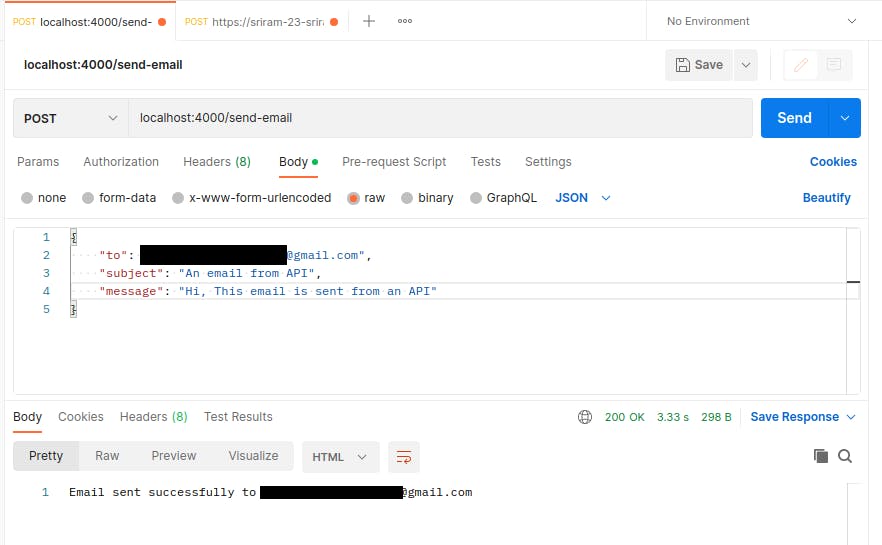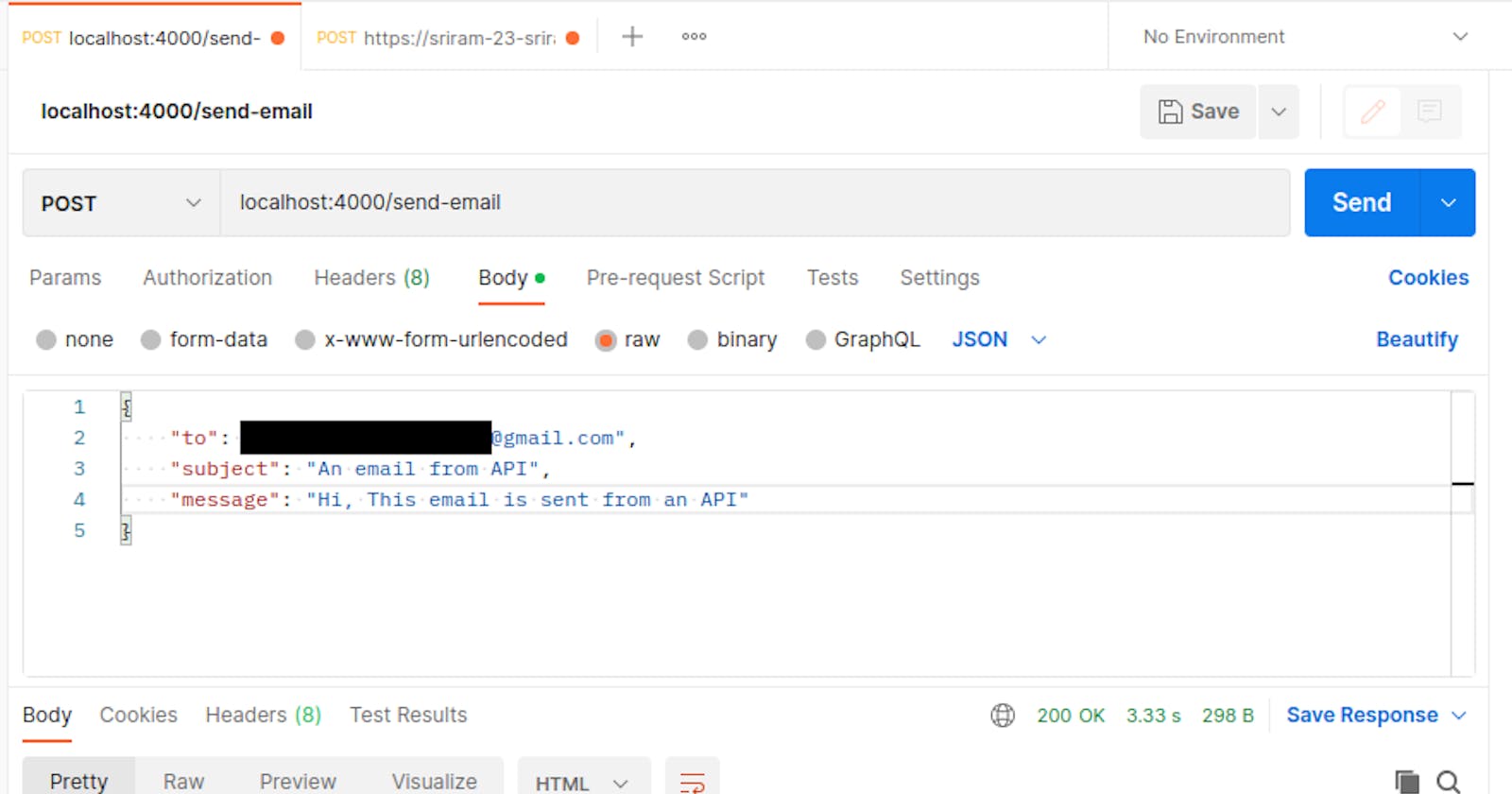Table of contents
Hello World!
Let us see how we can send emails just by calling an API.
Prerequisites
Fundamental knowledge of Javascript, Node.js, and Express.js.
Gmail Account
Node
Editor of your choice (E.g. VS Code)
Postman (To test the API)
Gmail Configuration
To send emails from API, we need to configure Gmail with the below things:
Headover to https://myaccount.google.com/security
Enable 2-step verification.
Click on App passwords.
Google would prompt you for your password. Type in your password and enter.
Select
Other (Custom Name)in the "Select App" drop-down.Provide a name and click on
Generatebutton.You will be getting a password. Store it in a safe place.
Server
Let us create a simple express server, where we will be creating our API that sends an email
yarn init -y
# OR
npm init -y
Install the following dependencies
Express
Dotenv - Where we will be storing the password and sender email address
Nodemailer - An NPM package to send emails.
Body-parser
yarn add express dontenv nodemailer body-parser
Let's create a .env file in the root level to store sensitive data
PORT = 4000
EMAIL = "youremail@yourdomain.com"
EMAIL_PASS = "your_password"
Now let's write a basic express server which serves some static content. Create server.js file and add the following
const express = require('express');
const bodyParser = require('body-parser');
const nodemailer = require('nodemailer');
const app = express();
app.use(bodyParser.urlencoded({ extended: false }));
app.use(bodyParser.json());
app.get('/', (req, res) => {
res.send('The server is running');
});
app.listen(process.env.PORT || 4000, () => console.log('Backend is running on localhost:4000'));
Now we have written a simple get request, that would print The server is running message when we hit the / path.
Type node server in the terminal to run the application. The app would run in localhost:4000 . Open it in the browser, you would be seeing the "The server is running" message in the browser. Now we've successfully set up an express server.
The Send Email API
Now let's create an API for sending emails. Create a post request, get necessary details like subject, message and recipient email from the request body, create a node mailer instance and send the email.
app.post('/send-email', (req,res)=>{
const mailTransporter = nodemailer.createTransport({
service: 'gmail',
// getting sender email and password from .env file
auth: {
user: process.env.EMAIL,
pass: process.env.EMAIL_PASS
}
});
// Getting the recipient email, subject and the message from the req body
const mailDetails = {
from: process.env.EMAIL,
to: req.body.to,
subject: req.body.subject,
text: req.body.message
};
// Sending email through the node mailer
mailTransporter.sendMail(mailDetails, (err, data) => {
if(err) {
// Returning the error message in case of any errors
res.send(err)
} else {
// Returning Success message when email is sent successfully
res.send(`Email sent successfully to ${req.body.to}`)
}
});
})
The final code would be
const express = require('express');
const bodyParser = require('body-parser');
const nodemailer = require('nodemailer');
const app = express();
app.use(bodyParser.urlencoded({ extended: false }));
app.use(bodyParser.json());
app.get('/', (req, res) => {
res.send('The server is running');
});
app.post('/send-email', (req,res)=>{
const mailTransporter = nodemailer.createTransport({
service: 'gmail',
// getting sender email and password from .env file
auth: {
user: process.env.EMAIL,
pass: process.env.EMAIL_PASS
}
});
// Getting the recipient email, subject and the message from the req body
const mailDetails = {
from: process.env.EMAIL,
to: req.body.to,
subject: req.body.subject,
text: req.body.message
};
// Sending email through the node mailer
mailTransporter.sendMail(mailDetails, (err, data) => {
if(err) {
// Returning the error message in case of any errors
res.send(err)
} else {
// Returning Success message when email is sent successfully
res.send(`Email sent successfully to ${req.body.to}`)
}
});
})
app.listen(process.env.PORT || 4000, () => console.log('Backend is running on localhost:4000'));
Testing API
Now we are done with writing the API. Let's run the server and send an email.
Once the server is up, head over to the Postman app. Create a new Post request.
Enter localhost:4000/send-email in the URL bar.
Head over to the 'Body' tab, and click on the 'raw' radio button. Type in the details in JSON format like this.
{
"to": "receiver@someemail.com",
"subject": "This is a test email",
"message": "Hi, I've sent this email from an API!"
}
Hit the send button to send the message.


Hope this is helpful to you. Looking forward to your feedback. Thank you!
